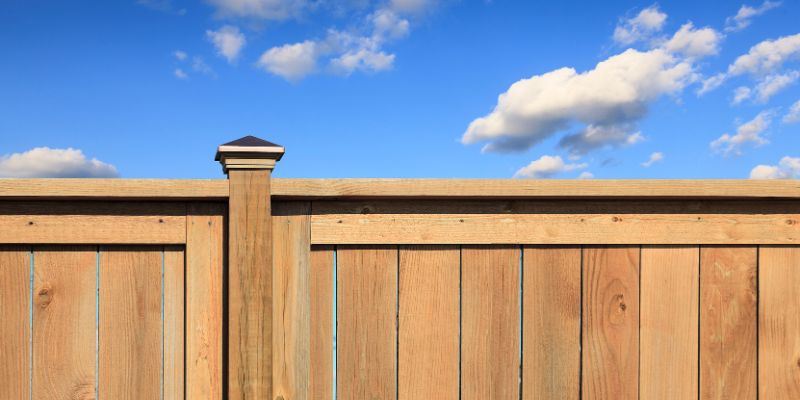Yes, Cedar Tone is real cedar. Cedar Tone is made from real cedar that has been treated to enhance its durability and appearance.
Introducing Cedar Tone: A beautiful and durable wood option Cedar wood is renowned for its natural beauty and durability. It adds a touch of elegance to any space, whether it’s used for fencing, siding, or decking. When it comes to choosing the right cedar product, Cedar Tone stands out as a preferred choice.
Cedar Tone is, in fact, real cedar that has undergone a special treatment process to enhance its durability and aesthetic appeal. This treatment not only protects the wood from decay and insect damage but also gives it a rich, deep color resembling natural cedar. We will explore the benefits of Cedar Tone and why it is a fantastic option for those seeking the timeless beauty of cedar with added durability.

The Difference Between Cedar Tone And Real Cedar
When considering materials for outdoor projects such as decking or siding, two popular options that often come up are Cedar Tone and Real Cedar. While they may sound similar, there are distinct differences between the two. In this article, we’ll explore the composition, characteristics, and pros and cons of both Cedar Tone and Real Cedar, helping you make an informed decision for your outdoor project.
Composition Of Cedar Tone
Cedar Tone is a manufactured material that aims to mimic the natural beauty of real cedar wood. It is typically made from a combination of wood fibers, recycled plastic, and bonding agents. The wood fibers provide strength and stability, while the plastic component adds durability and resistance to rot and insects. The bonding agents help hold the material together, ensuring long-lasting performance.
Characteristics Of Real Cedar
Real Cedar, on the other hand, is the genuine product derived from the cedar tree. It is known for its unique and rich appearance, with a warm reddish-brown hue that evolves over time. Real Cedar is lightweight, naturally resistant to rot, decay, and pests, and possesses excellent insulating properties. Additionally, it has a distinct aroma, making it a favorite choice for those seeking an authentic wood experience.
Pros And Cons Of Cedar Tone
Like any other material, Cedar Tone has its own set of advantages and disadvantages. Let’s take a look at them.
Pros:
- Durable and weather-resistant
- Low maintenance, requiring no staining or sealing
- Does not splinter or crack easily
- Cost-effective compared to Real Cedar
Cons:
- Appearance may not match the genuine beauty of Real Cedar
- Limited color options compared to Real Cedar
- May not have the same level of natural wood aroma
- Not as environmentally friendly as Real Cedar
Pros And Cons Of Real Cedar
Let’s now explore the advantages and disadvantages of opting for Real Cedar for your outdoor project.
Pros:
- An incredibly distinct and natural beauty
- Offers a wide range of color options and finishes
- Renewable and sustainable resource
- Biodegradable and kinder to the environment
Cons:
- Requires regular maintenance, including staining and sealing
- May be pricier compared to Cedar Tone
- Attractiveness can fade over time without proper care
- More susceptible to rot, decay, and pests if not properly maintained
Choosing Between Cedar Tone And Real Cedar
When it comes to creating a beautiful and timeless look for your outdoor space, choosing the right type of wood is crucial. Two popular options that often come up in the discussion are Cedar Tone and Real Cedar. Both offer their distinct advantages, but making the right choice boils down to your specific needs and preferences. To help you make an informed decision, let’s take a closer look at the considerations for choosing Cedar Tone and Real Cedar.
Considerations For Choosing Cedar Tone
Cedar Tone is a type of treated lumber that is designed to mimic the appearance of real cedar. It is created by applying a stain or pressure-treated chemical to the wood, giving it a similar color and texture. There are a few factors to consider if you are leaning towards Cedar Tone for your outdoor project:
- Budget: Cedar Tone is generally more affordable than Real Cedar, making it an attractive option for those who are working with a tight budget.
- Maintenance: Unlike Real Cedar, Cedar Tone requires less maintenance as it is treated to resist rot, insects, and moisture. This means you won’t have to worry about regular staining or sealing to keep it looking good.
- Consistency: Cedar Tone offers consistent color and appearance throughout the entire board, providing a more uniform look for your project.
Considerations For Choosing Real Cedar
If you’re aiming for a classic and natural look, Real Cedar might be the better choice for you. Here are a few things to consider:
- Aesthetics: Real Cedar boasts a distinctive and beautiful grain pattern that adds an undeniable rustic charm to any outdoor space. Its vibrant color and natural variations create a visually appealing result that can’t be replicated.
- Environmental Factors: Real Cedar is a sustainable and renewable resource, making it an environmentally-friendly choice. It is also naturally resistant to decay and insect damage, reducing the need for chemical treatments.
- Longevity: While Real Cedar requires regular maintenance, proper care can extend its lifespan significantly. With routine staining and sealing, you can enjoy its natural beauty for many years to come.
Choosing between Cedar Tone and Real Cedar ultimately comes down to your personal preferences, project requirements, and budget. Whether you prioritize affordability and low maintenance or prefer the authenticity and unique features of real wood, understanding the key considerations for each option will help you make the right decision for your outdoor space.
Frequently Asked Questions For Is Cedar Tone Real Cedar
What’s The Difference Between Cedar Tone And Cedar?
Cedar tone is a color treatment applied to wood to mimic the look of cedar. Cedar wood, on the other hand, is natural wood cut from cedar trees. The difference lies in the appearance, with cedar tone having a similar look to cedar but without the same properties and durability of real cedar.
Is Cedar Tone Better Than Green Treated?
Cedar tone is often preferred over green treated wood due to its natural look and durability. It requires less maintenance and has a longer lifespan. It also provides a unique, rich color that green treated wood lacks.
How Long Does Cedar Tone Last?
Cedar tone lasts for a considerable time due to its natural durability. It can last 15-30 years or longer depending on various factors such as climate and maintenance. Regular sealing and proper care can help extend its lifespan further.
Is Cedar Tone Treated Lumber Toxic?
No, cedar tone treated lumber is not toxic. It is a safe and environmentally friendly wood treatment option.
Conclusion
To sum up, the term “Cedar Tone” refers to a type of wood material that mimics the appearance of real cedar. While it may offer a cost-effective and low-maintenance alternative to genuine cedar, it is crucial to ensure its quality and durability before making a decision.
By understanding the differences between Cedar Tone and real cedar, consumers can make an informed choice that complements their needs and preferences. Consider consulting with professionals and conducting thorough research to make an educated decision on which option suits your specific requirements best.


